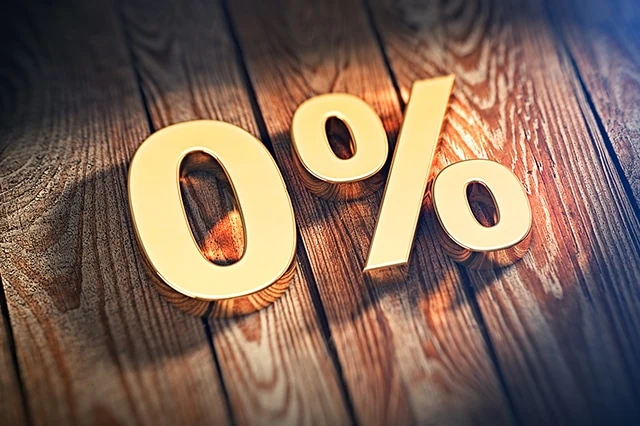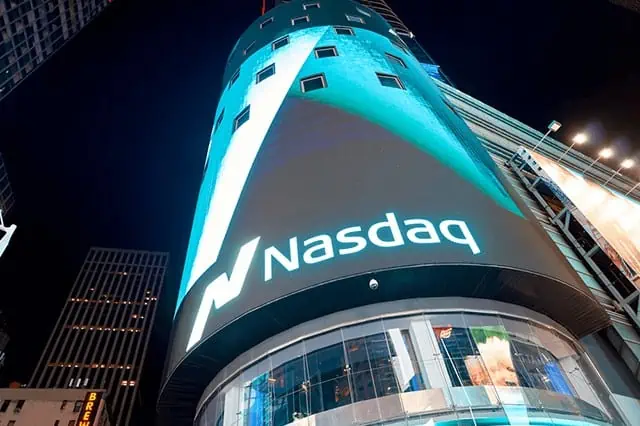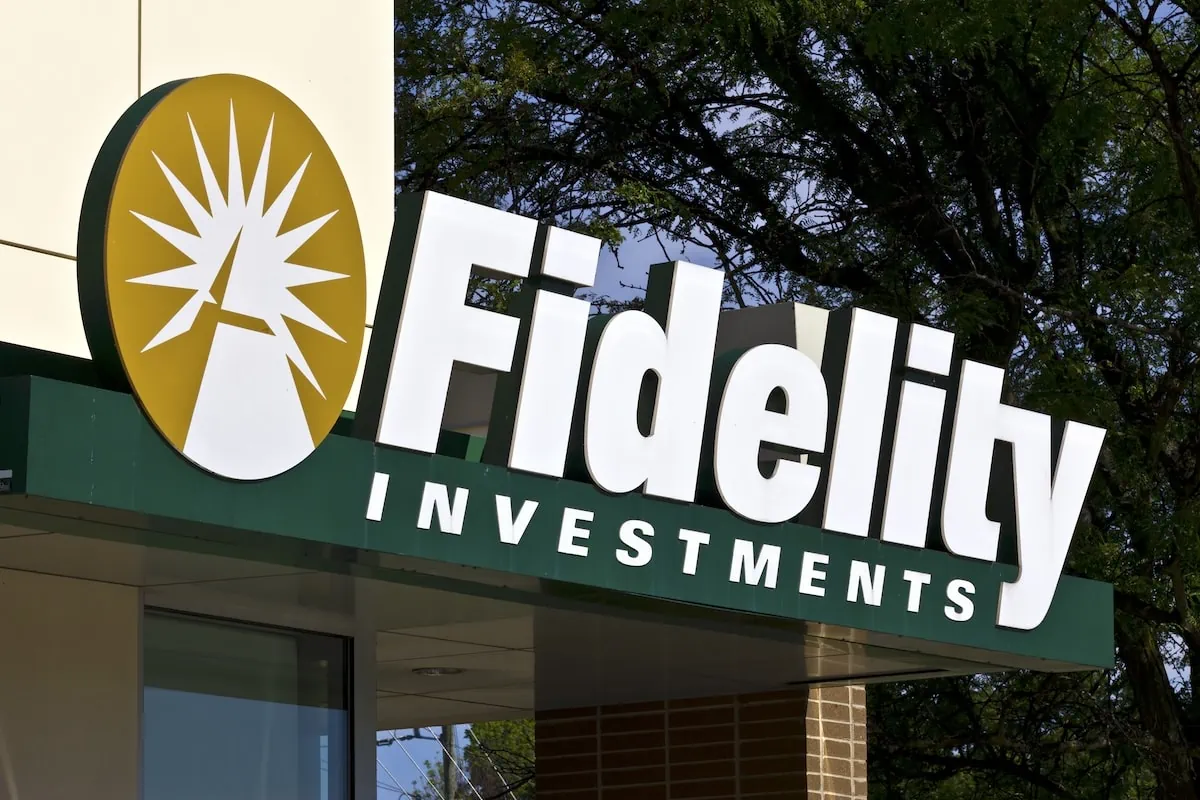You’d be hard-pressed to find anything investors love more than index funds.
And why not? These simple, automated investments let us have our cake and eat it too. We get all of the diversification of your standard managed fund, but with the added cost efficiency and simplicity of tracking a rules-based index.
In fact, index funds are now the preferred choice of American investors. The first index fund—what today is the Vanguard 500 Index Fund—launched in 1976. Twenty years later, index funds still represented a single-digit market share of assets across all long-term mutual funds and exchange-traded funds (ETFs), according to Morningstar data. That number grew to 10% by the turn of the century, swelled to nearly 30% by 2015, and by the start of 2024, index funds’ share of assets finally edged out the share of actively managed funds, 50.15% to 49.85%.
Of course, those assets are scattered across literally thousands of products. But unless you’re a billionaire masochist, you’re probably not looking to juggle a few thousand index funds in your portfolio. Indeed, if you’re investing in index funds, you’d likely only need a handful to build yourself an effective portfolio.
That’s where we come in.
Today, we’re going to provide you with a shortlist of the best index funds you can buy right now. The goal here is to provide you with a variety of options that should fill most investors’ basic needs. (Note: This list is exclusively index mutual funds—but you can find a plethora of great index ETFs in our best ETFs list.)
Disclaimer: This article does not constitute individualized investment advice. These securities appear for your consideration and not as personalized investment recommendations. Act at your own discretion.
Editor’s Note: Tabular data is up-to-date as of Sept. 15, 2024.
Table of Contents
How Were the Best Index Funds Selected?

Mutual funds are big business. The Investment Company Institute’s most recent annual Fact Book shows that investors have plowed $25.5 trillion in assets into nearly 8,600 U.S. mutual funds. But that same Fact Book shows the median number of mutual funds that a given household owns is … three.
That means if the average household splits their money between actively managed mutual funds and passively managed index funds, they might only need two index funds … possibly only one. Of course, that’s the average household; some investors might hold a few more.
Regardless, selecting a handful of the best index funds from a universe of thousands is awfully difficult. So I’ve pared that list down to a more digestible group of about 10.
I started my search with a quality screen, including only index funds that have earned a Gold Morningstar Medalist rating. Morningstar has two ratings systems—the Star ratings and the Medalist ratings. The latter are a forward-looking analytical view of a fund. Per Morningstar:
“For actively managed funds, the top three ratings of Gold, Silver, and Bronze all indicate that our analysts expect the rated investment vehicle to produce positive alpha relative to its Morningstar Category index over the long term, meaning a period of at least five years. For passive strategies, the same ratings indicate that we expect the fund to deliver alpha relative to its Morningstar Category index that is above the lesser of the category median or zero over the long term.”
As I’ve written in other Young and the Invested articles, a Medalist rating doesn’t mean Morningstar is necessarily bullish on the underlying asset class or categorization. It’s merely an expression of confidence in the fund compared to its peers.
To narrow the list further, I also required the following:
— No loads: In addition to annual expenses, some funds charge additional fees, including “loads.” For instance, if you invested $10,000 in a mutual fund with a 5% front-end load, the mutual fund company would immediately take $500 out in fees. So, you’d already be starting behind the 8-ball, investing just $9,500 to start with. The funds here have no sales charges.
— Reasonable investment minimums. The maximum investment minimum for inclusion is $3,000. But only two funds on this list require that much to start. Most of the funds on this list have either no minimum requirement, or a minimum of just $1. Also, some fund providers explicitly lay out lower investment minimums for specific retirement plans, such as individual retirement accounts (IRAs). T. Rowe Price, for instance, has $2,500 minimum initial investments on many of its funds, but lowers that minimum to $1,000 when investing through an IRA.
— Broad availability: Many mutual funds have several share classes, many of which are limited to certain types of accounts, like, say, only for 401(k)s or only for wealth management clients. All of the index funds listed here are Investor-class or other shares that are generally considered to be widely available to retail investors.
From the much more manageable resulting list, I’ve selected a group of index funds that provide a wide array of core and tactical strategies, ensuring there’s at least one fund, if not many funds, for just about everyone.
The Best Index Funds to Buy Now

The following represent some of the best index funds you can buy at the moment—and in almost every case, they’re either the cheapest such index fund you can buy, or within just a couple of basis points of being the cheapest. (A basis point is one one-hundredth of a percentage point.)
A few final notes to keep in mind as you’re reading this list:
While all of these funds have no loads, brokerage commission fees might apply; check your brokerage before purchasing. Also, your brokerage might require a larger minimum initial investment for mutual funds than the fund itself requires. And some brokerage accounts might not let you purchase certain funds, even if they’re generally available to retail investors. (For instance, you might be able to buy the completely made-up Woodley Investments Large-Cap Fund at Schwab, but not at Fidelity.)
Also, this isn’t a ranking of the best funds. Every fund on here rates as excellent already. This is just listed in a natural progression of various portfolio needs, starting broadly with different stock flavors and ending with a few bond funds.
And lastly … you’re about to see a lot of Fidelity. Fidelity, more so than just about anyone else in the game, specializes in low-cost index funds. In several cases, a Fidelity index fund received the nod over virtually identical products from other providers because its costs were slightly lower—something that, if you look at past returns, has historically contributed to a slight performance advantage.
With all that out of the way, let’s look at the best index funds you can buy.
1. Fidelity 500 Index Fund

— Style: U.S. large-cap stock
— Assets under management: $599.4 billion
— Dividend yield: 1.3%
— Expense ratio: 0.015%, or 15¢ per year for every $1,000 invested
— Minimum initial investment: None
The Fidelity 500 Index Fund (FXAIX) isn’t just one of the best index funds you can buy—it’s the only index fund that made our list of the best mutual funds you can buy.
The S&P 500 Index is commonly used as a performance benchmark for mutual funds that invest in U.S.-based large-cap stocks. But the majority of fund managers who run these funds typically struggle to beat their benchmark. According to S&P Dow Jones Indices, “60% of all active large-cap U.S. equity funds underperformed the S&P 500.” That’s no anomaly: Thanks to yet another 365 days of lagging in 2023, the majority of active managers have now failed to beat the S&P 500 in 21 of the past 24 years.
I say to that: If you can’t beat it, join it.
Related: 10 Best Index Funds to Buy
Fidelity 500 Index Fund tracks the S&P 500—a collection of some of the largest American companies, but to clarify, not the 500 largest American companies. To be included in this index, a company must have a market capitalization of at least $18.0 billion, its shares must be highly liquid (shares are frequently bought and sold), and at least 50% of its outstanding shares must be available for public trading, among other criteria. A company must also have positive earnings in the most recent quarter, and the sum of its previous four quarters must be positive—two traits that weed out at least a few massive firms that would otherwise be included.
Note: Once a company becomes an S&P 500 component, it’s not automatically kicked out if it fails to meet all of the criteria. However, the selection committee would take this under consideration and possibly boot the company.
People like to consider the S&P 500 a reflection of the U.S. economy. But it’s hardly a perfect representation, and it’s certainly not equal. For instance, the technology sector accounts for nearly 30% of FXAIX’s assets. Real estate, materials, and utilities merit less than 3% apiece. This is in no small part because, like many indexes, the S&P 500 is market capitalization-weighted, which means the greater the size of the company, the more “weight” it’s given in the index. Currently, trillion-dollar-plus companies Microsoft (MSFT), Apple (AAPL), and Nvidia (NVDA) sit atop Fidelity 500 Index Fund’s holdings list.
Related: 9 Best Fidelity Index Funds to Buy
Turnover, which is how much the fund tends to buy and sell holdings, is always low, given that only a handful of stocks enter or leave the index in any given year. This tamps down (and often eliminates) capital-gains distributions, which receive unfavorable tax treatment. This makes FXAIX an extremely tax-efficient option for taxable brokerage accounts.
Importantly: Fidelity 500 Index Fund is not the only S&P 500 mutual fund. Several fund providers offer these products, and across a variety of share classes. What makes FXAIX stand out from the rest is that it’s a widely accessible share class that, because its fees undercut virtually all other competitors, should continue to outperform other providers’ equivalent products.
Related: 7 High-Quality, High-Yield Dividend Stocks
2. Fidelity Mid Cap Index Fund

— Style: U.S. mid-cap stock
— Assets under management: $35.8 billion
— Dividend yield: 1.0%
— Expense ratio: 0.025%, or 25¢ per year for every $1,000 invested
— Minimum initial investment: None
Mid-cap stocks are a way to thread the needle between the relative size and stability of large-cap stocks and the high growth potential of small-cap stocks. Indeed, this ideal middle ground has earned mid-caps—typically considered to be stocks between $2 billion and $10 billion in market capitalization—the nickname of “Goldilocks” stocks.
Related: 13 Best Mutual Funds to Buy
“In any given 1-year rolling period since 2003, small-, mid-, and large-cap stocks have outperformed 33%, 26%, and 41% of the time,” says investment company Hennessy Funds. “However, the longer mid-cap stocks are held, the more often they outperformed. In fact, 60% of the time, mid-caps outperformed small- and large-cap stocks over any 10-year rolling period in the past 20 years.”
Better still? During the 20-year period (through 9/30/23) that Hennessy studied, it found that while mid-caps delivered higher risk than large caps, they delivered better returns … and they generated both lower risk and higher returns than small caps.
Fidelity Mid Cap Index Fund (FSMDX) is an exceedingly cost-efficient way to tap this area of the market. FSMDX’s underlying index is the Russell MidCap Index, which is made up of the 800 smallest stocks in the Russell 1000 (which is itself an index of the U.S. market’s 1,000 largest stocks). As a result, you’re getting exposure to 800-plus mostly mid-cap stocks—the fund is 75% invested in mids, but it does have about 10% of assets in smaller large caps, and another 15% in larger small caps.
Related: 10 Best Fidelity Funds to Buy
This might sound odd, but it’s actually common for 20%-30% of a mid-cap fund’s holdings to bleed into small- and/or large-company territory. That said, Morningstar notes that FSMDX “tends to go higher up the market-cap ladder than other mid-cap indexes, favoring large-cap stocks that tend to be more established than mid-cap stocks.”
Sector weights will naturally change over time as certain businesses come into and go out of favor, but right now, industrials are tops at 20%, followed by financials (16%), information technology (13%), and consumer discretionary stocks (10%). Also, thanks to both the market cap-weighting of the Russell MidCap Index and the high number of holdings, single-stock risk is minimal—even top holding Amphenol (APH) is weighted at a mere 0.7% of assets.
Related: 10 Best Dividend Stocks to Buy [Steady Eddies]
3. Fidelity ZERO Extended Market Index Fund

— Style: U.S. mid- and small-cap stock
— Assets under management: $1.7 billion
— Dividend yield: 1.3%
— Expense ratio: None
— Minimum initial investment: None
A little bit further along the risk-reward spectrum is the Fidelity ZERO Extended Market Index Fund (FZIPX), which includes both mid- and small-cap stocks (market caps below $2 billion).
A basic business concept is that the larger your company, the harder it is to sustain high growth rates. (And conversely, the smaller your company, the easier a time you should have delivering rapid growth.) As it was aptly explained to me: “It’s a lot easier to double your revenues when you’re starting from $1 million instead of $1 billion.” These stocks can also get a lift when they start hitting the radar of institutional investors and fund managers, or begin qualifying for certain indexes that force index funds to buy them.
Related: Fidelity ZERO Funds Review: Do You Get What You Pay For?
There’s more risk, of course. Revenues might be dependent on fewer products or services—meaning a single disruption could have massive financial consequences. They usually also have less access to capital than their larger peers, so they’re less likely to get a lifeline should they suffer from broader economic headwinds. Thus, small caps are the definition of “high risk, high reward.”
Because mid- and small-cap stocks are considered significantly different from one another, many funds will invest primarily in one or the other. However, Fidelity ZERO Extended Market Index Fund invests significantly in both.
FZIPX tracks the Fidelity U.S. Extended Investable Market Index, which considers mid- and small-cap stocks to be “the top 2,500 U.S. companies, excluding the largest 500 companies, based on float-adjusted market capitalization.” (Float-adjusted market cap weighting accounts only for market cap based on the “float,” which is shares available for public trading. It doesn’t consider private or non-transferable shares.) The result is a roughly 70/30 blend of more than 2,100 small- and mid-cap stocks. Single-stock risk is characteristically minimal; even FZIPX’s largest holdings account for less than 1% of assets each.
Related: 9 Best Fidelity Index Funds to Buy
Fidelity ZERO Extended Market Index Fund is meant to be a complementary fund to Fidelity ZERO Large Cap Index Fund (FNILX), which holds the 500 largest stocks by float-adjusted market cap—effectively allowing you to tweak your large- and your mid- and small-cap allocations without any overlap in the stocks that you hold.
What makes Fidelity ZERO Extended Market Index Fund one of the best index funds to buy is both its interesting coverage universe and the fact it charges absolutely nothing in fees. You see, FZIPX and FNILX are part of the Fidelity ZERO lineup of funds, which are free to own and have zero minimum investment requirements. However, you can only buy ZERO funds through an individual Fidelity account, such as a brokerage or individual retirement account (IRA).
If you don’t have a Fidelity account and don’t feel like opening one, the closest alternative is the Fidelity Extended Market Index Fund (FSMAX). It’s a direct complement to the Fidelity 500 Index Fund and charges just 0.035%, or 35¢ per year for every $1,000 invested. Just note that it has a slightly higher mid-cap weight and even a little large-cap exposure. It also has a lower Morningstar Medalist rating, at Bronze.
Related: 3 Basic Energy ETFs for Beginner Portfolios
4. Schwab Total Stock Market Index Fund

— Style: U.S. all-cap stock
— Assets under management: $25.2 billion
— Dividend yield: 1.2%
— Expense ratio: 0.03%, or 30¢ per year for every $1,000 invested
— Minimum initial investment: $1
Anyone who says “you can’t have it all” clearly has never heard of “total market” products like the Schwab Total Stock Market Index Fund (SWTSX).
Related: 7 Best Schwab Funds to Buy
The SWTSX is designed to “track the total return of the entire U.S. stock market.” Now if we’re splitting hairs, even at 3,350 stocks, you’re not actually investing in the “entire U.S. stock market” … but it’s about as close as any regular Joe would ever need to get.
Now, a total-market fund usually won’t give you equal exposure to the different stock sizes. Like SWTSX, they’re typically market cap-weighted, so they end up being heavily tilted toward large caps. Indeed, SWTSX currently has 72% of its assets wrapped up in large caps (like with the S&P 500 fund, Microsoft, Apple, and Nvidia are top weights here), 20% in mid-caps, and the remaining 8% in smalls.
Related: 7 Best Schwab Index Funds to Buy
The point of a total-market fund like SWTSX is simplicity. One fund gives you exposure to virtually all of the U.S. stock market—and it overloads you in the largest, most stable firms while providing only modest exposure to smaller, more volatile firms. Better still? You can get all this for just 0.03% in annual expenses. It’s a one-two punch of coverage and price that has been recognized with a Morningstar Gold Medalist rating, inclusion on my list of Schwab’s top mutual funds, and a place here among the best index funds you can buy.
How (or whether) you use it is a matter of preference. If you like the exact breakdown of SWTSX’s large-, mid-, and small-cap exposure, you could make it the core of your portfolio and not have to bother with any other broad U.S. stock funds. If you like the idea of owning all these different-sized stocks, but would want to do so in different ratios, you could either hold SWTSX and augment with the funds above, or buy your ideal mixture of large-, mid-, and small-cap funds.
Related: 7 Best High-Dividend ETFs for Income-Minded Investors
5. Fidelity Nasdaq Composite Index Fund

— Style: U.S. large-cap growth stock
— Assets under management: $17.2 billion
— Dividend yield: 0.6%
— Expense ratio: 0.29%, or $2.90 per year for every $1,000 invested
— Minimum initial investment: None
Like I mentioned above, investing in a “broad market” index fund doesn’t necessarily mean you’re getting equal representation of all the market’s different industries. That’s true of any fund that tracks the S&P 500, and it’s certainly true of the Fidelity Nasdaq Composite Index Fund (FNCMX).
Related: 10 Best Vanguard Funds to Buy for the Everyday Investor
When you visit a financial website or look at a business channel chyron, you’ll typically see data for the S&P 500 and Dow Jones Industrial Average prominently displayed. That’s because when the average person asks “how did the stock market do today?” they’re typically asking about one of these two benchmarks of American stock market performance.
They’re probably not asking about the Nasdaq Composite Index, and yet it too holds a place of prominence right alongside those other two venerable market indexes. This market cap-weighted index is made up of all the roughly 3,700 stocks that are listed on the Nasdaq Composite, which serves alongside the New York Stock Exchange as the world’s two largest stock exchanges by market capitalization.
But despite being a very broad market index, it’s better known as a proxy of the technology sector.
Consider FNCMX. This Fidelity index fund holds 3,100 Nasdaq Composite stocks—not the index’s full roster, but a representative amount accounting for the vast majority of the index’s market cap. As I write this, nearly 50% of the fund’s assets are invested in the information technology sector. Another 15% is in the tech-esque communication services sector, which includes top-10 holdings Meta Platforms (META) and Alphabet (GOOGL). Another 14% of that is in consumer discretionary—and 9 of those points are in tech-esque top-10 holdings Amazon.com (AMZN) and Tesla (TSLA).
Related: 10 Best Vanguard Index Funds to Buy
In other words, without even considering any additional companies that aren’t actually in the tech sector but whose businesses still very much belong, you have roughly three-quarters of the index wrapped up in technology or tech-esque firms. That’s pretty lopsided exposure for such a “broad market” index fund.
Other aspects of Fidelity Nasdaq Composite Index worth noting? For one, there are some significant single-stock risks—Microsoft accounts for more than 11% of assets, while Apple sits at nearly 11% and Nvidia accounts for 10%. In fact, by weight, the top 10 holdings are responsible for more of FNCMX’s performance than the other 3,000-plus stocks combined. Also, while it’s categorized as a U.S. fund, Fidelity Nasdaq Composite Index does have a small 4% allocation to foreign firms by virtue of their listing on the Nasdaq.
Still, this growth-heavy profile has made FNCMX one of the best index funds for years. Investors that have accepted its risks have been well-rewarded. This index mutual fund has beaten the category average over every meaningful time frame, and long-term, it’s in the top 10% of its category over the trailing 15-year period.
Related: The 10 Best Fidelity Funds You Can Own
6. Vanguard Real Estate Index Fund Admiral Shares

— Style: U.S. sector (real estate)
— Assets under management: $21.0 billion
— Dividend yield: 3.7%
— Expense ratio: 0.13%, or $1.30 per year for every $1,000 invested
— Minimum initial investment: $3,000
Investors who want to concentrate some of their money into certain parts of the economy can do so through “sector funds.” And Vanguard Real Estate Index Fund Admiral Shares (VGSLX) is one of the best.
The real estate sector is made up of real estate investment trusts (REITs)—a special class of company that boasts a few different rules, but whose shares still trade like your average stock. REITs were created in 1960 to help make real estate more accessible to the average Joe. They own and often operate real estate of all kinds—apartment buildings, strip malls, hotels, you name it.
Related: 10 Best Dividend Stocks to Buy
Importantly, REITs generally enjoy an exemption from corporate income taxes … in exchange for distributing 90% of their taxable income as dividends to their shareholders. As a result, REIT dividends tend to be mighty generous.
One way to invest in many of these opportunities at once is through a real estate fund like VGSLX. This Vanguard index fund holds roughly 160 real estate stocks that deal in a variety of property types, including industrial, retail, telecom tower, self-storage, office, residential, and more. For instance, right now, top holdings include logistics and warehousing REIT Prologis (PLD), telecommunications infrastructure play American Tower (AMT), and mall giant Simon Property Group (SPG).
Related: 9 Best Monthly Dividend Stocks for Frequent, Regular Income
And true to its nature, VGSLX currently yields a fat 3.5%-plus. That’s nearly three times what you’d get from an S&P 500 fund, and well more than you’d receive from even most high-yield dividend funds.
You can also buy this fund in ETF form via the Vanguard Real Estate ETF (VNQ), which charges 0.13% annually.
Related: 10 Best Vanguard Funds for the Everyday Investor
7. Vanguard Total International Stock Index Fund Admiral Shares

— Style: International all-cap stock
— Assets under management: $76.4 billion
— Dividend yield: 2.9%
— Expense ratio: 0.12%, or $1.20 per year for every $1,000 invested
— Minimum initial investment: $3,000
Have you noticed by now that all of the above funds have almost exclusively focused on U.S. stocks? Well, it makes sense. We’re U.S. investors. We have the most access to U.S. stocks. Most importantly, U.S. markets have long been among the most productive in the world—and if you believe in the American economy’s ability to keep growing, that should remain the case.
Still, most experts would tell you that it’s worth having at least some international exposure, and one way to do that is through the Vanguard Total International Stock Index Fund Admiral Shares (VTIAX).
Related: 7 Best High-Dividend ETFs for Income-Hungry Investors
The premise here is similar to Schwab Total Stock Market Index Fund but with an international tilt. VTIAX owns an eye-popping 8,500 stocks from more than 40 different nations—predominantly more developed nations like Japan (16%), the U.K. (10%), and Canada (7%), but with some decent exposure to emerging markets such as China (7%), India (6%), and Brazil (1%).
VTIAX is market cap-weighted, so large-cap stocks rule the roost. More than three-quarters of the portfolio is invested in large companies, followed by 18% in mid-caps, and the remaining 5% or so in smalls. Top holdings are well-known multinationals such as chipmaker Taiwan Semiconductor (TSM), Danish pharma giant Novo Nordisk (NVO), and Swiss foods conglomerate Nestle (NSRGY).
Related: Best Fidelity Retirement Funds
A feature more defensive-minded investors will like is VTIAX’s dividend yield. International blue chips tend to pay larger dividends than their American counterparts, so the resulting 3%-plus yield is more than double what you can get from the S&P 500 right now.
In short: Vanguard Total International Stock Index Fund’s massive holdings roster and dirt-cheap fees make it one of the best index funds Americans can use to get non-U.S. exposure and a fair amount of dividend income.
Related: The 10 Best Vanguard Index Funds You Can Buy
8. T. Rowe Price QM U.S. Bond Index Fund

— Style: Intermediate-term core bond
— Assets under management: $1.6 billion
— SEC yield: 4.4%*
— Expense ratio: 0.25%, or $2.50 per year for every $1,000 invested
— Minimum initial investment: $2,500
Most investors will want some exposure to bonds—debt issued by governments, companies, and other entities that pay interest to bondholders. But how much will largely depend on your age.
Related: Best Fidelity Retirement Funds for a 401(k) Plan
Bonds tend to be much less volatile than stocks, for better or worse; it limits downside, yes, but it also limits upside. Instead, most of the return from bonds comes from the steady stream of interest income they produce. They’re not great for generating wealth, which is your prime concern when you’re younger, but they’re outstanding for protecting wealth, which becomes increasingly pivotal as you age.
But it’s tough to go out and buy, say, a single bond. Data and research on individual issues is much thinner than it is for publicly traded stocks, plus, some bonds have minimum investments in the tens of thousands of dollars. So, your best bet is to buy a bond fund, which can provide you with access to hundreds if not thousands of bonds. Your most economical bet is to do so through bond index funds.
T. Rowe Price QM U.S. Bond Index Fund (PBDIX) is a core bond fund that helps you knock out most of your most basic bond needs in one place. About 30% of the fund’s 1,200-plus debt issues are U.S. Treasuries. Another 27% are corporate bonds. The biggest chunk, at around 35%, is wrapped up in securitized mortgages. The rest is sprinkled across municipal bonds, junk debt, and other issues. All but a tiny bit of PBDIX’s holdings enjoy investment-grade ratings; two-thirds are rated AAA, the highest possible tier. There’s some interest-rate risk—65% of the portfolio is in bonds with maturities of five years or longer. Duration, a measure of interest-rate sensitivity, is 6.2 years, implying that a 1-percentage-point hike in interest rates would send PBDIX 6.2% lower, and vice versa.
You can also get this strategy in ETF form, via the T. Rowe Price QM U.S. Bond ETF (TAGG), which charges an even lower 0.08%.
* SEC yield reflects the interest earned across the most recent 30-day period. This is a standard measure for funds holding bonds and preferred stocks.
Related: The 7 Best T. Rowe Price Funds to Buy and Hold
9. Fidelity Short-Term Treasury Bond Index Fund

— Style: Short-term government bond
— Assets under management: $3.4 billion
— SEC yield: 3.8%
— Expense ratio: 0.03%, or 30¢ per year for every $1,000 invested
— Minimum initial investment: None
Stocks aren’t the only asset with varying levels of risk and potential reward. Bonds can run the gamut, too.
Related: Best Fidelity Retirement Funds for an IRA
You can find some of the safest plays in the bond world in Fidelity Short-Term Treasury Bond Index Fund (FUMBX). This Fidelity index fund focuses on bonds that are considered low-risk for a pair of reasons: their short maturities, and their issuer (the U.S. Treasury).
Maturity is a major factor in determining bond risk. As a general rule, the longer the bond, the greater the risk that the bond might not be repaid. Interest rates matter, too. When rates go higher, new bonds pay more, which tempt people to sell their old bonds for the new, higher-paying bonds. But the temptation is much greater when you’re dealing with longer-term bonds with lots of payments remaining—and not so great for short-term bonds with one or just a couple payments left.
And it’s tough to ask for a better issuer. U.S. Treasury bonds are backed by the full faith and credit of the U.S. government, and as a result, they’re among the highest-rated bonds on the planet. While there’s no 100% guarantee they’ll be repaid, there’s a far higher likelihood of repayment than the vast majority of issuers out there.
Related: Best Vanguard Retirement Funds [Start Saving in 2024]
FUMBX invests in a tight grouping of fewer than 100 Treasury bond issues whose maturities span a few months to five years. That’s a bit longer-term than some other Treasury funds that limit their maturities to three years. But it still results in a portfolio average maturity of under three years, which is plenty short. Duration is just 2.6 years. That means FUMBX would fall just 2.6% in response to a 1-percentage-point hike in interest rates. Conversely, it would only rise that much on a similar decline in rates.
But that’s OK as long as you know what you’re buying! If all you want is portfolio protection that can still generate some yield (a bit below 4% currently), FUMBX is one of the best index funds you can buy.
Related: 9 Monthly Dividend Stocks for Frequent, Regular Income
10. Fidelity Freedom Index Funds

— Style: Target-date
— Assets under management (collectively): $141.0 billion
— Expense ratio: 0.12%, or $1.20 per year for every $1,000 invested
— Minimum initial investment: None
Target-date funds (TDFs) are the ultimate buy-and-hold instrument, meant to stay in your portfolio for literally decades.
TDFs are funds that shift their asset allocation over time to meet investors’ changing needs as they age. A person who’s, say, 25 in 2025 would expect to retire in 2065, so they’d buy a fund with a target retirement date of 2065. That fund will probably start out with a very heavy allocation to stocks (to grow the investors’ wealth), but as the years roll on and the fund approaches its target retirement date, it will start putting more of its assets into bonds (to protect the investors’ wealth).
Related: Best Target-Date Funds to Buy: Vanguard vs. Fidelity vs. Schwab
Many fund providers have at least one target-date series, though larger asset managers sometimes offer more. Fidelity is well outside the norm, however, with a whopping four—and the highest-rated among them are the Fidelity Freedom Index Funds.
Fidelity Freedom Index Funds, which are built exclusively from Fidelity’s lineup of low-cost index funds, are a rarity—they’re one of only a sparse few TDF series to enjoy a Gold Medalist rating, and the only Fidelity target-date series with that distinction. That rating is due in no small part to extremely low costs. Unlike actively managed target-date funds whose management fees tend to be different across the series, all Fidelity Freedom Index Funds charge the same fee: 0.12%.
Here’s a quick look at the full lineup:
— Fidelity Freedom Index 2005 Fund (FJIFX)
— Fidelity Freedom Index 2010 Fund (FKIFX)
— Fidelity Freedom Index 2015 Fund (FLIFX)
— Fidelity Freedom Index 2020 Fund (FPIFX)
— Fidelity Freedom Index 2025 Fund (FQIFX)
— Fidelity Freedom Index 2030 Fund (FXIFX)
— Fidelity Freedom Index 2035 Fund (FIHFX)
— Fidelity Freedom Index 2040 Fund (FBIFX)
— Fidelity Freedom Index 2045 Fund (FIOFX)
— Fidelity Freedom Index 2050 Fund (FIPFX)
— Fidelity Freedom Index 2055 Fund (FDEWX)
— Fidelity Freedom Index 2060 Fund (FDKLX)
— Fidelity Freedom Index 2065 Fund (FFIJX)
— Fidelity Freedom Index Income Fund (FIKFX)
So, why do Fidelity Freedom Index Funds stand out? Well, at least within the Fidelity lineups, here’s a comparison from our Charles Sizemore:
“We’ll compare the Fidelity Freedom 2065 Fund to its indexed sister fund, the Fidelity Freedom Index 2065 Fund (FFIJX). The index-only Fidelity Freedom fund has an expense ratio of just 0.12% compared to 0.71% for the active target-date fund. Those 59 basis points (a basis point is one one-hundredth of a percentage point) might not sound like much of a difference, but over time it compounds. Over the course of 10 years, if performance is equal, the index fund will make about 6 percentage points more overall due to the lower fees—and the difference will get wider with time.”
Related: Best Fidelity Funds to Hold in an HSA
How Does Your Portfolio Look? Ask Empower

More than 3 million users are putting their retirement on track by putting Empower’s tools and/or advisory services to work for them.
Wondering how your portfolio is shaping up? Sign up with Empower to use its free Investment Checkup tool, which can help you assess your portfolio risk, analyze past performance, and get a target allocation for your portfolio. You can even compare your portfolio to both the S&P 500 and Empower’s “Smart Weighting” Recommendation.
And if you want a fuller advisory experience? Empower’s full-service Wealth Management account pairs the firm’s tools with skilled human management. Empower will create a recommended portfolio spanning six asset classes, then help you implement your plans by giving you access to financial advisors who can guide you through retirement planning, college savings, workplace stock options, and more.
Regardless of how much money you bring to the table, if you sign up, you will be given the option to schedule an initial 30-minute financial consultation with an Empower advisor.
Why does a fund’s expense ratio matter so much?

Every dollar you pay in expenses is a dollar that comes directly out of your returns. So, it is absolutely in your best interests to keep your expense ratios to an absolute minimum.
The expense ratio is the percentage of your investment lost each year to management fees, trading expenses and other fund expenses. This figure matters because every dollar not lost to expenses is a dollar that is available to grow and compound. And over an investing lifetime, even a half a percent can have a huge impact.
Example: If you invest just $1,000 in a fund generating 5% per year after fees, over a 30-year horizon, it will grow to $4,116. However, if you invested $1,000 in the same fund, but it had an additional 50 basis points in fees (so it only generated 4.5% per year in returns), it would grow to only $3,584 over the same period.
Why should I buy no-load funds?

You should buy no-load funds for the same reason you should look to buy funds with lower expenses: The less money that goes to the provider, the more money that goes into your pocket.
Let’s say you have $20,000, so you invest $10,000 into two different mutual funds. Mutual Fund A has no sales charge. Mutual Fund B has a 5% front-end sales charge. Both funds gain 7% annually over the next 30 years. And for the sake of simplicity in this example, we’ll say both funds don’t charge any annual expenses.
— Mutual Fund A will earn you $76,123 at the end of those 30 years.
— Mutual Fund B will earn you $72,317 at the end of those 30 years. You see, when you buy Mutual Fund B, that 5% front-end sales charge means the provider takes 5% out of your initial investment. So rather than investing $10,000 to start, you’re actually just investing $9,500. But you don’t lose just that $500—you also lose another $3,806 in “opportunity cost,” which is the additional money that $500 would have earned had it not been lost to fees!
Sales charges are a significant handicap to a fund’s performance, so it’s only worth buying funds with loads if they produce much superior performance compared to the other funds you’re considering.
Related: 6 Best Stock Recommendation Services [Stock Picking + Tips]

Stock recommendation services are popular shortcuts that help millions of investors make educated decisions without having to spend hours of time doing research. But just like, say, a driving shortcut, the quality of stock recommendations can vary widely—and who you’re willing to listen to largely boils down to track record and trust.
The natural question, then, is “Which services are worth a shot?” We explore some of the best (and best-known) stock recommendation services.
Related: The Best Fidelity ETFs for 2024 [Invest Tactically]

If you’re looking to build a diversified, low-cost portfolio of funds, Fidelity’s got a great lineup of ETFs that you need to see.
In addition to the greatest hits offered by most fund providers (e.g., S&P 500 index fund, total market index funds, and the like), they also offer specific funds that cover very niche investment ideas you might want to explore.
Related: Best Target-Date Funds: Vanguard vs. Schwab vs. Fidelity

Looking to simplify your retirement investing? Target-date funds are a great way to pick one fund that aligns with when you plan to retire and then contribute to it for life. These are some of the best funds to own for retirement if you don’t want to make any investment decisions on a regular basis.
We provide an overview of how these funds work, who they’re best for, and then compare the offerings of three leading fund providers: Vanguard, Schwab, and Fidelity.
Related: 9 Best Monthly Dividend Stocks for Frequent, Regular Income

The vast majority of American dividend stocks pay regular, reliable payouts—and they do so at a more frequent clip (quarterly) than dividend stocks in most other countries (typically every six months or year).
Still, if you’ve ever thought to yourself, “it’d sure be nice to collect these dividends more often,” you don’t have to look far. While they’re not terribly common, American exchanges boast dozens of monthly dividend stocks.
Please Don’t Forget to Like, Follow and Comment

Did you find this article helpful? We’d love to hear your thoughts! Leave a comment with the box on the left-hand side of the screen and share your thoughts.
Also, do you want to stay up-to-date on our latest content?
1. Follow us by clicking the [+ Follow] button above,
2. Subscribe to The Weekend Tea, our weekly newsletter to read more about investing, spending, taxes, and more, and
3. Give the article a Thumbs Up on the top-left side of the screen.
4. And lastly, if you think this information would benefit your friends and family, don’t hesitate to share it with them!




